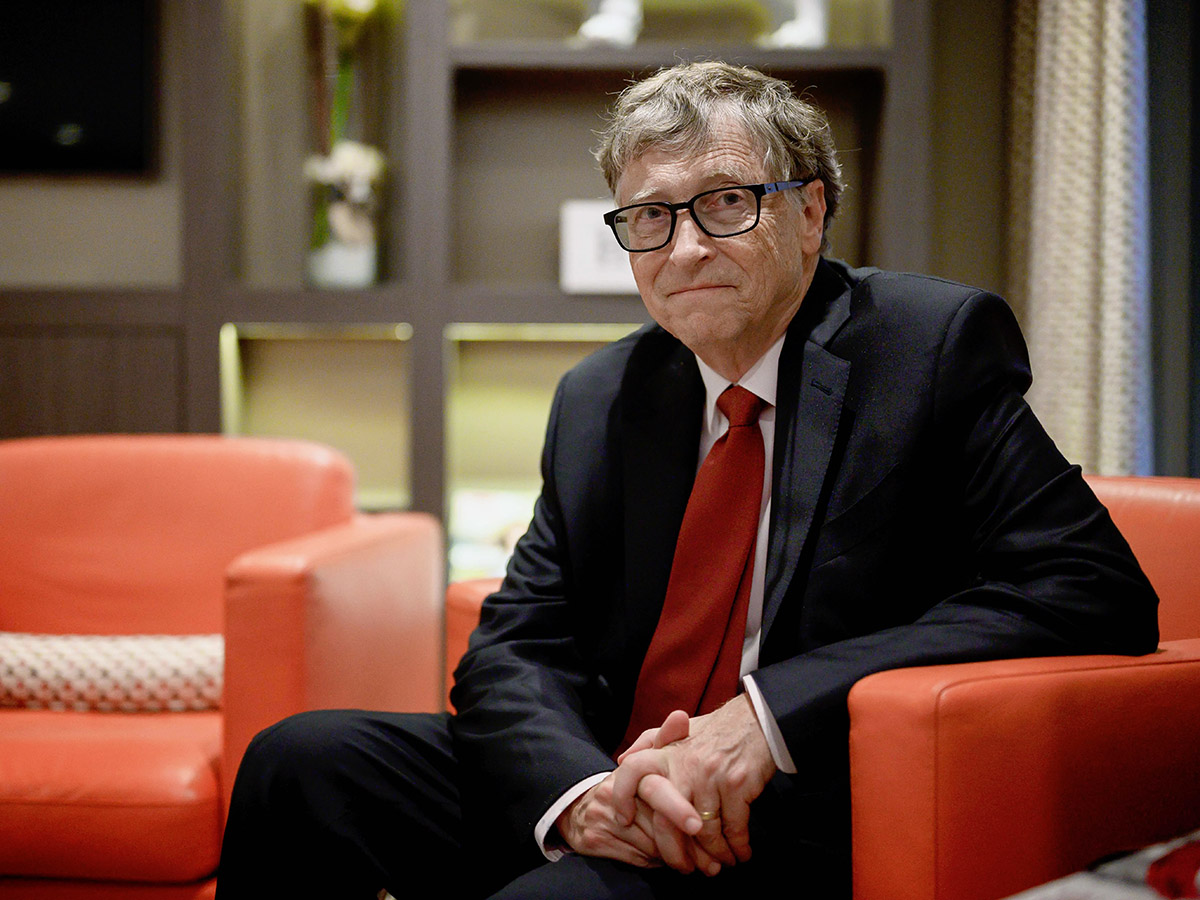

Finance
How Much Liquid Assets Does Elon Musk Have
Modified: January 15, 2024
Discover Elon Musk's financial standing and liquid assets. Find out how much he is worth and gain insights into his financial success.
(Many of the links in this article redirect to a specific reviewed product. Your purchase of these products through affiliate links helps to generate commission for LiveWell, at no extra cost. Learn more)
Table of Contents
Introduction
Elon Musk, the enigmatic billionaire entrepreneur, is no stranger to the headlines. From revolutionizing the electric vehicle industry with Tesla to making space travel more accessible through SpaceX, Musk has become a household name synonymous with innovation and disruption.
When it comes to his financial status, there is often speculation surrounding the magnitude of Musk’s wealth. In particular, many are curious about the amount of liquid assets he possesses. Liquid assets refer to the cash or assets that can be easily converted into cash without significant loss in value. These assets are crucial in determining an individual’s financial stability and flexibility.
In this article, we will delve into the world of Elon Musk’s finances and explore the extent of his liquid assets. We will uncover the various sources contributing to his wealth and gain insights into how he manages and allocates his resources.
Understanding the liquid assets of such an influential figure can provide valuable insights into Musk’s financial decisions, overall net worth, and investment strategies. So, let’s embark on this journey to unravel the mystery behind Elon Musk’s liquid assets.
Early Life and Career
Elon Musk was born on June 28, 1971, in Pretoria, South Africa. From a young age, he displayed exceptional talent and a keen interest in technology and entrepreneurship. Musk’s entrepreneurial journey began during his college years at the University of Pennsylvania, where he started a web software company called Zip2.
In 1999, Compaq acquired Zip2 for a whopping $307 million, which provided Musk with his first major financial windfall. Building on this success, Musk co-founded X.com, an online payment company, which later evolved into the widely known and utilized platform we now know as PayPal. In 2002, eBay acquired PayPal for $1.5 billion, further bolstering Musk’s financial standing.
With newfound wealth and success, Elon Musk set his sights on various ambitious ventures. In 2004, he founded SpaceX with the ultimate goal of revolutionizing space technology and making interplanetary travel a reality. While SpaceX faced numerous setbacks in its early years, the company has since achieved remarkable progress, becoming a key player in the space industry.
Alongside SpaceX, Musk made a bold move in the automotive industry by co-founding Tesla Motors in 2003. Initially focusing on electric sports cars, Tesla quickly gained recognition for its cutting-edge technology and commitment to sustainable transportation. Today, Tesla’s electric vehicles have become a symbol of innovation and are widely regarded as some of the most advanced automobiles on the market.
In addition to his involvement with SpaceX and Tesla, Musk has engaged in various other ventures, including SolarCity (now part of Tesla), Neuralink, and The Boring Company, each targeting different aspects of industry disruption and technological advancement.
Elon Musk’s entrepreneurial drive and ability to innovate in multiple industries have catapulted him into the upper echelons of wealth. Building on his success with Zip2, PayPal, SpaceX, and Tesla, Musk has amassed a significant fortune, making him one of the wealthiest individuals in the world.
Now that we have seen the foundation of Musk’s wealth, let’s delve deeper into the breakdown of his liquid assets and uncover the extensive financial portfolio he has built over the years.
Net Worth of Elon Musk
Elon Musk’s net worth has experienced tremendous growth over the years, largely driven by the success of his ventures and investments. As of [current year], Forbes estimates his net worth to be around [current net worth] billion, making him one of the richest individuals on the planet.
While Musk’s primary source of wealth stems from his ownership stakes in companies like SpaceX and Tesla, his net worth is also influenced by other investments and assets he holds. It is important to note that Musk’s net worth fluctuates due to the volatility of stock prices and the performance of his various ventures.
Moreover, Elon Musk has opted to receive a minimum salary and no bonuses from Tesla, making his net worth primarily tied to the value of his stock holdings. This approach aligns his personal wealth with the success of the companies he leads, emphasizing his commitment to long-term value creation.
As of [current year], a significant portion of Elon Musk’s net worth is tied to his ownership in Tesla. With the steady rise in Tesla’s stock price, Musk’s stake in the company has become a significant driver of his overall wealth. However, it is important to distinguish between Musk’s total net worth and his liquid assets, as the latter represents only the easily accessible cash or assets that can be quickly converted.
Now, let’s dive deeper into the breakdown of Musk’s liquid assets and explore how they contribute to his financial capabilities.
Breakdown of Liquid Assets
While Elon Musk’s total net worth is substantial, it’s essential to understand the breakdown of his liquid assets—the readily accessible resources he can convert into cash without significant loss in value.
A significant portion of Musk’s liquid assets derives from his ownership stakes in Tesla and SpaceX. These holdings represent a substantial source of wealth that he can tap into if needed. As the CEO and largest shareholder of Tesla, Musk has a considerable amount of liquid assets tied to the value of the company’s stock.
Aside from Tesla, Musk holds equity in SpaceX, the private aerospace manufacturer and space transportation company. Although SpaceX is not publicly traded, Musk’s ownership stake in the company is considered a valuable liquid asset. SpaceX has successfully raised substantial private funding and secured valuable government contracts, further enhancing the value of Musk’s shares.
In addition to his primary stakes in Tesla and SpaceX, Musk also has investments in other companies and ventures. These investments may include startups, public companies, and alternative investments such as real estate or private equity. While the specifics of Musk’s portfolio are not publicly disclosed, it is reasonable to assume that he has carefully diversified his investments to maximize his liquid asset holdings.
Furthermore, Musk has been known to allocate a portion of his liquid assets towards personal ventures and projects. For instance, he has made substantial investments in Neuralink, a company focused on developing advanced brain-computer interface technology, and The Boring Company, which aims to revolutionize transportation infrastructure through tunneling technology.
It is important to note that the exact breakdown of Elon Musk’s liquid assets is constantly changing, and new investments or divestments may occur over time. Musk is known for his bold and decisive moves, which can impact the composition of his liquid assets.
Now that we have explored the breakdown of his liquid assets, let’s delve into some of the key components of Musk’s financial portfolio, starting with his substantial holdings in Tesla.
Tesla Stock Holdings
Elon Musk’s holdings in Tesla represent a significant portion of his liquid assets. As the CEO and largest shareholder of the electric vehicle company, Musk’s wealth is largely tied to the performance and valuation of Tesla’s stock.
Musk’s ownership stake in Tesla has been the result of years of hard work and dedication to building the company. As of [current year], Musk’s ownership stake in Tesla is estimated to be around [percentage]% of the company’s outstanding shares.
The value of Musk’s Tesla stock holdings has skyrocketed in recent years due to the phenomenal success and growth of the company. Tesla’s stock price has experienced staggering increases, driven by strong vehicle sales, innovative technology advancements, and optimistic market expectations for the future of electric vehicles.
While the exact value of Musk’s Tesla stock holdings fluctuates with market conditions and Tesla’s stock price, it is safe to say that these holdings significantly contribute to his liquid asset portfolio. However, it is important to note that the liquidity of Musk’s Tesla holdings may be limited to some extent, as he may face certain restrictions on selling or transferring his shares due to regulatory requirements or contractual agreements.
It is worth mentioning that Musk’s personal wealth is closely intertwined with the success of Tesla. By having a large portion of his net worth in the form of Tesla stock, Musk demonstrates his belief in the company’s long-term potential and aligns his financial interests with the company’s performance.
As Tesla continues to grow and disrupt the automotive industry, Musk’s Tesla stock holdings are likely to play a significant role in his financial standing and the overall growth of his liquid assets. However, it is important to remember that Musk’s financial portfolio extends beyond Tesla, and we will explore other key components in the following sections.
Now let’s turn our attention to another critical aspect of Musk’s financial holdings: his stakes in SpaceX.
SpaceX Stock Holdings
Elon Musk’s SpaceX is not publicly traded, but his ownership stakes in the company still represent a significant portion of his liquid assets. SpaceX, founded by Musk in 2002, has emerged as a pioneering force in the aerospace industry, revolutionizing space technology and exploration.
As the CEO and majority owner of SpaceX, Musk has made significant investments in the company, driving its growth and success. While the specific details of Musk’s holdings in SpaceX are not publicly disclosed, it is widely acknowledged that his ownership stake in the company is substantial.
SpaceX, through a series of successful launches, contracts with government agencies, and private investment rounds, has seen tremendous growth in its valuation over the years. The company’s achievements, such as the Falcon 9 rocket and Crew Dragon spacecraft, have garnered global recognition and increased its market value.
While SpaceX is not listed on the stock exchange, the company has attracted significant investment from various sources, including venture capitalists and institutional investors. This influx of capital has propelled SpaceX’s valuation to astronomical heights, bolstering Musk’s overall net worth substantially.
Musk’s SpaceX stock holdings contribute to his liquid assets, albeit with some limitations in terms of liquidity. As a privately held company, the ability to convert SpaceX stock into cash may be more restricted compared to publicly traded stocks.
However, SpaceX has had success with secondary offerings that allow employees and early investors to sell their shares, providing a potential avenue for Musk to access liquidity from his SpaceX holdings. Furthermore, as SpaceX continues to execute its ambitious plans, including the Starship spacecraft and the Starlink satellite network, the value of Musk’s ownership in the company may increase even further.
It is important to note that the valuation of SpaceX is subject to market conditions and could fluctuate over time. Nevertheless, Musk’s significant ownership stake in SpaceX adds a substantial asset to his liquid asset portfolio, contributing to his overall financial stability.
Now that we have explored Musk’s holdings in Tesla and SpaceX, let us dive into other key investments and assets that contribute to the liquid asset portfolio of this visionary entrepreneur.
Other Investments and Assets
In addition to his holdings in Tesla and SpaceX, Elon Musk has diversified his investment portfolio with other ventures and assets, further contributing to his liquid assets.
One notable investment is Musk’s involvement in SolarCity, a solar energy company that he co-founded and which eventually merged with Tesla. Musk’s stake in SolarCity represents a valuable asset within his liquid asset portfolio. Renewable energy has been a growing industry, and Musk’s involvement in SolarCity reflects his commitment to sustainable solutions and the potential for long-term returns.
Furthermore, Musk has made strategic investments in various technology companies and startups. While the specifics of his investments are not publicly known, it is widely reported that Musk has allocated significant funds to ventures such as Neuralink, a company focused on developing brain-computer interface technology, and The Boring Company, which aims to revolutionize transportation through tunneling technology.
These investments serve as both financial assets and strategic bets on emerging technologies that Musk believes will reshape industries. While the exact liquidity of these investments may vary depending on market conditions and exit opportunities, they contribute to the overall diversity and potential growth of Musk’s liquid asset holdings.
In addition to his investments, Musk owns various valuable assets that contribute to his overall net worth. These assets may include luxury properties, yachts, private jets, and collectibles, among others. While they may not be highly liquid in nature, they offer value and can serve as a part of Musk’s overall financial strategy and personal enjoyment.
It is important to note that the exact composition of Musk’s investments and assets is not publicly disclosed, as he maintains a level of privacy regarding his personal financial affairs. However, based on his past successes and propensity for strategic investments, it is reasonable to assume that Musk’s diversified liquid assets play a significant role in his overall financial position.
Now, let’s turn our attention to another aspect of Musk’s financial journey: his philanthropic efforts and how they tie into his broader financial considerations.
Philanthropic Efforts
Elon Musk is known not only for his groundbreaking ventures but also for his philanthropic endeavors. Throughout his career, Musk has demonstrated a commitment to giving back and addressing pressing global challenges through strategic philanthropy.
One of the most notable examples of Musk’s philanthropy is his involvement in the Giving Pledge, an initiative founded by Warren Buffett and Bill Gates. By joining the Giving Pledge, Musk has committed to donating the majority of his wealth to charitable causes during his lifetime or in his will.
Through his philanthropic initiatives, Musk aims to tackle issues such as climate change, renewable energy, and the long-term viability of human civilization. For instance, Musk has pledged $100 million to the Musk Foundation, a nonprofit organization focused on initiatives related to renewable energy, science education, and space exploration.
Musk has also focused on addressing global challenges through initiatives like the XPRIZE Foundation. In partnership with XPRIZE, Musk has established several competitions, incentivizing innovators to develop breakthrough technologies in areas like carbon capture, educational software, and space exploration.
Additionally, Musk has demonstrated his commitment to philanthropy by actively engaging in disaster response efforts. During times of crisis, he has offered assistance by providing funds, resources, and technical expertise to aid in recovery and rebuilding efforts.
While Musk’s philanthropic efforts contribute to the betterment of society, they also have financial implications. Donating significant portions of his wealth can impact the composition of Musk’s liquid assets and potentially influence his investment strategies.
Moreover, philanthropy aligns with Musk’s broader vision of creating positive change and advancing humanity. By directing a portion of his wealth towards worthy causes, Musk seeks to leverage his resources to tackle some of the world’s most pressing problems, leaving a lasting impact beyond his entrepreneurial achievements.
Overall, Musk’s philanthropic efforts reflect his commitment to using his financial resources and influence to drive positive change, making him a prominent figure in both the business and philanthropic spheres.
Now let’s wrap up the article and summarize Musk’s liquid asset holdings and the key takeaways from the exploration of his financial portfolio.
Conclusion
Elon Musk, the visionary entrepreneur behind companies like Tesla and SpaceX, has amassed significant wealth throughout his career. While the exact breakdown of his liquid assets may not be publicly disclosed, it is clear that Musk’s financial portfolio is robust and diverse.
Musk’s liquid assets include his stakes in Tesla and SpaceX, two companies that have experienced remarkable growth and garnered substantial market value. These holdings provide him with significant resources that can be converted into cash if needed.
In addition to his primary investments, Musk has wisely diversified his portfolio with strategic investments in other ventures and assets. These investments include involvement in solar energy through SolarCity, as well as investments in emerging technologies such as Neuralink and The Boring Company.
Moreover, Musk’s philanthropic efforts demonstrate his commitment to using his wealth and influence to drive positive change. By pledging a majority of his wealth to charitable causes, Musk shows a dedication to addressing global challenges and making a lasting impact.
It is important to note that the financial landscape is dynamic and subject to change. Musk’s liquid assets are influenced by various factors, including market conditions, the performance of his ventures, and his philanthropic initiatives.
In conclusion, while the exact breakdown of Elon Musk’s liquid assets may remain somewhat elusive, it is clear that his financial portfolio is substantial and diverse, reflecting his entrepreneurial success and strategic investment decisions. The combination of his stakes in Tesla and SpaceX, along with other investments and assets, positions Musk as one of the wealthiest individuals in the world.
As Elon Musk continues to innovate and disrupt industries, his liquid assets will continue to play a crucial role in fueling his ambitions, supporting his ventures, and contributing to his overall financial stability and impact on the world.














